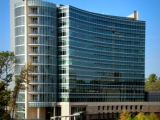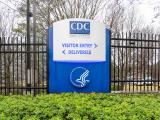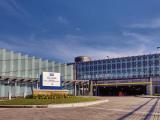Editor's note: This is the last in a seven-part series investigating the prospects for development of vaccines to head off the threat of an influenza pandemic posed by the H5N1 avian influenza virus. The series puts promising advances in vaccine technology in perspective by illuminating the formidable barriers to producing large amounts of an effective and widely usable vaccine in a short time. Part 6 explored the potential of novel vaccine technologies such as using whole flu viruses or growing vaccines in cell cultures instead of in eggs.
Nov 2, 2007 (CIDRAP News) – Although money for pandemic influenza vaccine research has begun to flow and results have picked up speed, there is widespread frustration that it all took so long.
"If we are serious about a pandemic, we should assume it is going to be imminent and we should be prepared as if it is imminent—not 10, 15 years down the road, but imminent," said David Fedson, MD, a retired vaccine industry executive who has published analyses of pandemic vaccine planning (see Bibliography: Fedson 2007: Author interview).
A chorus of calls to action
Calls have come from across the political spectrum for a more aggressive, better-funded, tightly organized research effort. Former Senate Majority Leader William H. Frist (R-Tenn.) called in August 2005 for a "Manhattan Project for the 21st century" (see Bibliography: Frist 2005). In the same month, Michael T. Osterholm, PhD, MPH, director of the University of Minnesota Center for Infectious Disease Research and Policy, publisher of CIDRAP News, recommended the creation of "an international project to develop the ability to produce a vaccine for the entire global population within several months of the start of a pandemic [that would be] a top priority of the Group of Seven industrialized nations plus Russia (the G-8)" (see Bibliography: Osterholm 2005).
Further, the nonprofit, nonpartisan advocacy group Trust for America's Health recommended in October 2006 that governments create a "multinational pandemic vaccine research and development master program" (see Bibliography: Trust for America's Health 2006), and the Infectious Diseases Society of America (IDSA) echoed that call in January 2007, recommending an appropriation of $2.8 billion in such a project's first year (see Bibliography: IDSA 2007).
"An effort on the scale of the Apollo space project is required," the IDSA said.
The Manhattan Project and the nuclear bombs that resulted from it are a sensitive subject to raise in a health crisis that demands international cooperation—particularly a health crisis centered in Asia, where the bombs were used.
But implicit in the invocation of that all-out effort is a hunger for the power, funding, freedom from bureaucracy, and single-minded focus that its leaders enjoyed. The Manhattan Project was founded at emergency speed: The lag time between Albert Einstein's famous letter advising President Franklin Roosevelt that nuclear fission might permit the creation of "extremely powerful bombs" and the first meeting of a newly formed federal Advisory Committee on Uranium was a mere 10 days. The project’s chief, Brigadier General Leslie Groves, was handpicked for his reputation for ruthless efficiency. Even after the United States entered World War II in December 1941, the project boasted the ability to cherry-pick any staff and claim any funding it needed; eventually it employed 130,000 people and received $2 billion in 1940s dollars (about $23 billion today).
Most notably for parallels to pandemic policy, the Manhattan Project simultaneously pursued multiple research paths into nuclear fission and weapons development, dropping entire avenues of inquiry and increasing other labs' funding and staff as results emerged. And from the time of Einstein's letter in 1939 to the dropping of two atomic bombs on Japan in 1945, less than 6 years elapsed (see Bibliography: Schwartz 1998; Gosling 1999).
"I feel as a scientist that we could make progress more rapidly if we sat down in advance and came up with a big-picture strategy and then funded it," said Dr. Gregory Poland, director of the Mayo Clinic's Vaccine Research Group in Rochester, Minn. "We have neither a process for rapidly developing new vaccines nor a track record" (see Bibliography: Poland 2007).
The National Institute of Allergy and Infectious Diseases (NIAID), the primary conduit of federal flu research funds to scientists, believes it does have a robust research agenda. Dr. Carole Heilman, director of the division of microbiology and infectious diseases, points to the flu-research recommendations issued by a blue-ribbon NIAID panel this year as evidence that the agency is guiding extramural researchers to critical questions about flu (see Bibliography: Heilman 2007, NIAID 2007). But with funding limited until recently, much of the research being conducted came into being because of private-sector interests rather than an overarching plan, said longtime flu researcher Dr. Arnold Monto of the University of Michigan (see Bibliography: Monto 2007).
Redefining the problem
Those calling for a Manhattan Project–like effort say that what is needed is much broader than what NIAID or all of NIH could deliver. It requires active coordination among all the federal health agencies along with cooperation from congressional funders, plus parallel efforts in other countries. "Pandemic vaccine development has been viewed primarily as a vaccine problem that should be addressed with better science," Fedson said, "but fundamentally it is a global public health problem that requires better management" (see Bibliography: Fedson and Dunnill 2007: From scarcity to abundance).
And, they say, it is urgent that such an effort be established soon, because there is no way of predicting accurately when a pandemic might arrive. If it arrives soon rather than later, the lack of vaccine in most of the world will create a divide between haves and have-nots that could corrupt international relations long after the pandemic ends.
The long standoff with the Indonesian government over sharing of H5N1 isolates has provided a foretaste of the disruption such resentment could cause. The health ministry of Indonesia—the country that has experienced the most human cases and deaths from H5N1 flu—stopped sending isolates to World Health Organization (WHO) collaborating laboratories in late 2006. Those laboratories both analyze the isolates to track the evolution of seasonal and novel flu strains and use them to develop pandemic vaccine candidates; Indonesia's decision to stop contributing was apparently triggered by the realization that it could never afford to purchase vaccines made from isolates it provided.
By challenging the WHO, Indonesia deprived the international community of a key source of information on emerging flu viruses. It also emboldened other developing countries to join its protest, leading to a week-long negotiation at the annual World Health Assembly (WHA), a WHA resolution promising reconsideration of the virus-sharing system, and WHO commitments to invest in vaccine manufacturing in the developing world. The concessions did not completely repair relations, however: The question of control over viruses remains open and will be discussed again at a WHO meeting in Geneva that opens Nov 5 (see Bibliography: McKenna 2007: System for global; McKenna 2007: Virus ownership).
It is possible that failing to achieve a pandemic vaccine when it is needed—or even failing to confront in advance the possibility that supplies will fall short—could fracture international pandemic preparations just when cooperation will be essential.
"At this point, when a pandemic happens, vaccines are going to provide some benefit to a very limited number of people," Osterholm said. "But they are also going to create a major diversion of activity and energy when the decisions have to be made about who gets what limited vaccine exists. I worry that their negative impact will outweigh their positive impact: They will cause a crisis of leadership around the world" (see Bibliography: Osterholm 2007).
The pandemic vaccine puzzle
Part 1: Flu research: a legacy of neglect
Part 2: Vaccine production capacity falls far short
Part 3: H5N1 poses major immunologic challenges
Part 4: The promise and problems of adjuvants
Part 5: What role for prepandemic vaccination?
Part 6: Looking to novel vaccine technologies
Part 7: Time for a vaccine 'Manhattan Project'?
Bibliography

















